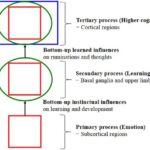The history of Native Americans learning English is intertwined with a complex and often painful narrative of cultural assimilation. Forced enrollment in residential schools, designed to strip Native American children of their cultural identity, played a significant role in this process. This article explores the historical context of English language acquisition among Native Americans, the lasting impact of these policies, and ongoing efforts to revitalize indigenous languages.
From Forced Assimilation to Language Loss
Beginning in the 1870s and continuing well into the 20th century, the United States government implemented a policy of forced assimilation through residential schools. In these institutions, Native American children were punished for speaking their native languages and coerced into learning English. This systematic suppression of indigenous languages had devastating consequences, leading to the near extinction of many languages and creating a generational gap in language transmission. Parents, seeking to protect their children from the harsh treatment they endured, often chose not to teach their native languages, further contributing to language loss.
The Native American Languages Act and the Promise of Revitalization
A significant shift in US policy occurred in 1990 with the passage of the Native American Languages Act (NALA). This legislation recognized the unique status of Native American languages and the responsibility of the United States to ensure their survival. NALA affirmed the right of Native Americans to use their indigenous languages in all settings, including education. However, initial funding was insufficient to support widespread language revitalization programs.
The Esther Martinez Native American Languages Preservation Act of 2006 provided additional funding for language nests, survival schools, master-apprentice programs, and other initiatives aimed at fostering language fluency. This act recognized the importance of immersion programs in creating fluent speakers, acknowledging that traditional classroom instruction alone cannot effectively revitalize endangered languages.
Challenges to Language Revitalization: The No Child Left Behind Act
Despite these positive legislative steps, the No Child Left Behind Act of 2001 (NCLB) presented significant challenges to language immersion programs. NCLB’s emphasis on standardized testing in English and requirements for “highly qualified” teachers, often holding bachelor’s degrees and state certifications, created obstacles for communities where fluent speakers were primarily elders without formal teaching credentials. Although NALA provided exemptions for Native American language teachers, schools faced difficulties in getting state authorities to recognize these exemptions. Furthermore, NCLB’s assessment requirements, conducted solely in English, disadvantaged students in immersion programs who were primarily learning in their native languages.
Hope in Immersion Programs and the Future of Native Languages
Despite these challenges, immersion programs have demonstrated remarkable success. Students in these programs often exhibit higher graduation rates, improved test scores, and a stronger connection to their cultural heritage. Examples include the success of Native Hawaiian language programs, which now extend through university level, and Diné (Navajo) immersion students performing on par with their non-immersion peers in standardized tests. These programs demonstrate that language revitalization is not only possible but also crucial for the academic and cultural well-being of Native American communities.
Reclaiming Control of Education: A Path to Language and Cultural Preservation
The success of immersion programs underscores the importance of returning control of education to Native American tribal authorities. This would empower communities to develop language programs tailored to their specific needs and cultural contexts. Empowering communities to revitalize their languages not only strengthens cultural identity but also fosters academic success and overall well-being. The journey to reclaim and revitalize Native American languages is ongoing, but the dedication of communities and the demonstrable success of immersion programs offer hope for the future.
